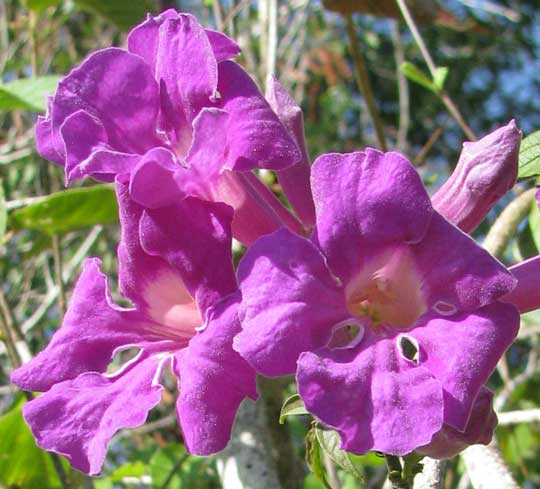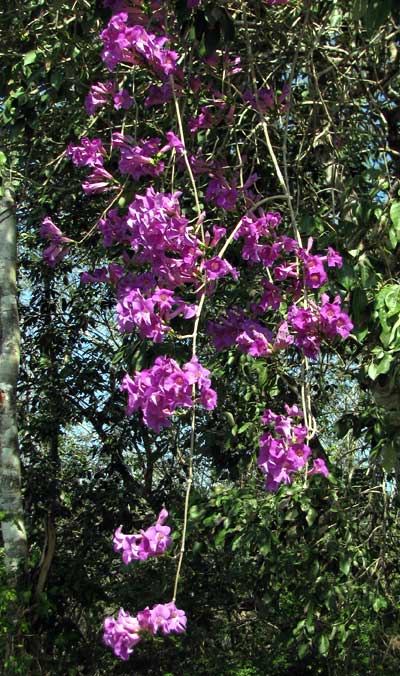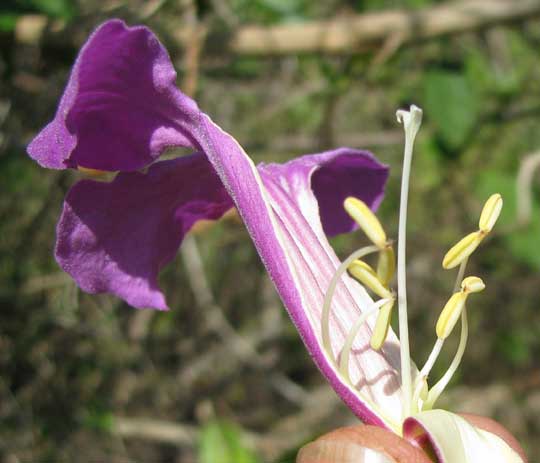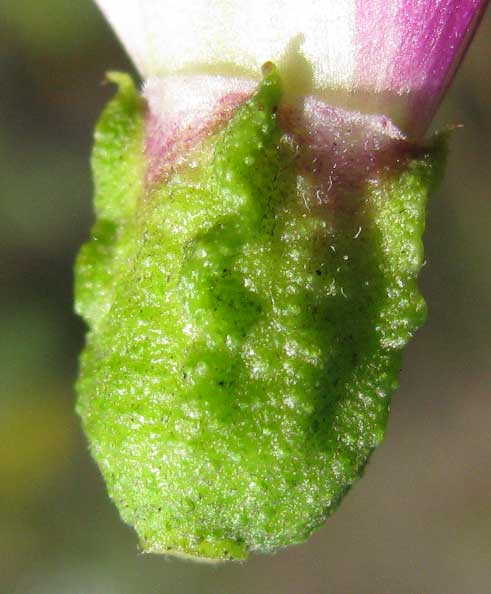Excerpts from Jim Conrad's
Naturalist Newsletter

from the January 30, 2011 Newsletter issued from Hacienda Chichen Resort beside Chichén Itzá Ruins, central Yucatán, MÉXICO; limestone bedrock, elevation ~39m (~128ft), ~N20.676°, ~W88.569°
ARRABIDAEA VINE

This week's star find was a vine with leg-long, spectacularly dangling cascades of tubular, 1-2/3-inch-long (4.2cm), purple corollas, as shown above.
The flowers show up particularly brightly because now during the dry season the vine is mostly leafless. You can see a flower, its lower petal thrust forward a little more than the others to provide pollinators with a nice landing pad, at the top of this page.
Inside the corolla tube four stamens curve upward to hold yellow anther against the ceiling, so that entering pollinators have pollen dusted from the anthers onto their backs. The white, slender, stiff style projects beyond the stamens so it can receive pollen from the visiting pollinator before it becomes dusted with the flower's own pollen. A longitudinal section of a flower showing all this is shown below:

A very few compound leaves had freshly emerged bearing two or three leaflets, as shown below:

Those features are very typical of flowers and leaves of the Bignonia Family. One unusual field mark for this species, however, is its warty calyx, shown below:

This is ARRABIDAEA PODOPOGON*, apparently with no English name, since it's endemic to the Yucatan and northern Belize, and not too common. It's such an attractive plant that it deserves to be widely cultivated, though.